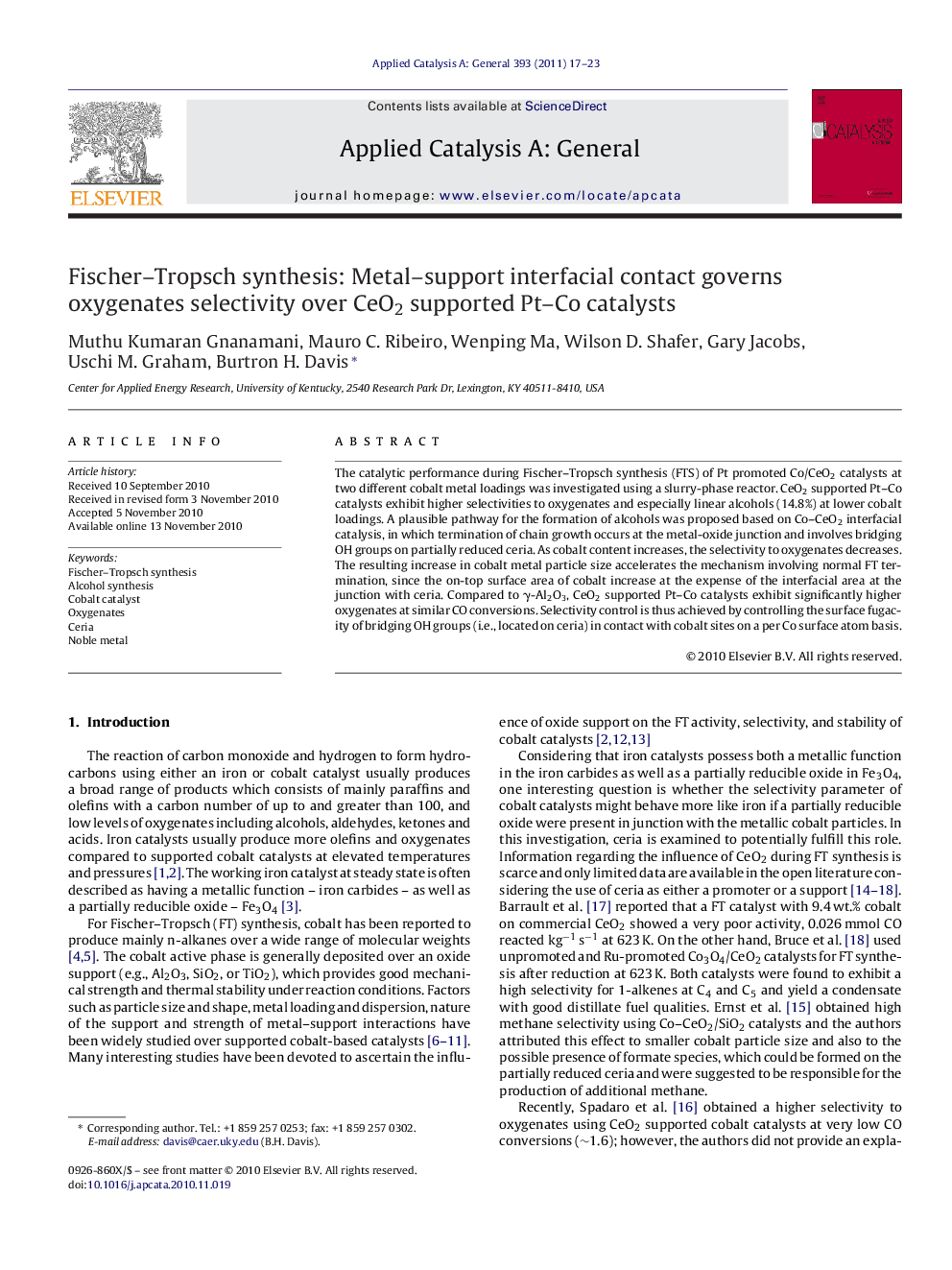| Article ID | Journal | Published Year | Pages | File Type |
|---|---|---|---|---|
| 41736 | Applied Catalysis A: General | 2011 | 7 Pages |
The catalytic performance during Fischer–Tropsch synthesis (FTS) of Pt promoted Co/CeO2 catalysts at two different cobalt metal loadings was investigated using a slurry-phase reactor. CeO2 supported Pt–Co catalysts exhibit higher selectivities to oxygenates and especially linear alcohols (14.8%) at lower cobalt loadings. A plausible pathway for the formation of alcohols was proposed based on Co–CeO2 interfacial catalysis, in which termination of chain growth occurs at the metal-oxide junction and involves bridging OH groups on partially reduced ceria. As cobalt content increases, the selectivity to oxygenates decreases. The resulting increase in cobalt metal particle size accelerates the mechanism involving normal FT termination, since the on-top surface area of cobalt increase at the expense of the interfacial area at the junction with ceria. Compared to γ-Al2O3, CeO2 supported Pt–Co catalysts exhibit significantly higher oxygenates at similar CO conversions. Selectivity control is thus achieved by controlling the surface fugacity of bridging OH groups (i.e., located on ceria) in contact with cobalt sites on a per Co surface atom basis.
Graphical abstractFigure optionsDownload full-size imageDownload high-quality image (53 K)Download as PowerPoint slideResearch highlights▶ Pt–Co/CeO2 catalysts are active towards forming oxygenates during FTS. ▶ A proposed pathway for alcohol formation is based on the Co–CeO2 interface. ▶ Selectivity to oxygenates decreased with an increase of cobalt metal loading. ▶ Selectivity depends on the surface fugacity of ceria OH groups in contact with Co0.
